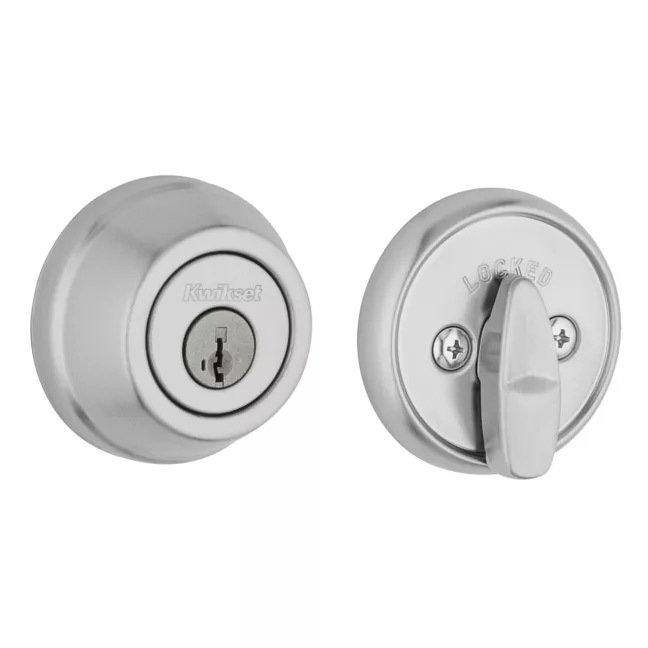

Schools may also need to replace the whole structure, including the door, the door frame, and the lockset, because they all have to be compatible. School facilities experts said there’s more to it than just putting a new locking device on a door. “How can you replace 500 door locks? How long is that going to take? And how quickly can you do it? All of this is a huge logistic lift.” K-12 schools “are not set up for significant maintenance work,” said O’Leary from New Bedford schools.
DOOR DEADBOLT HOW TO
is simply another on the list and money is a finite resource.” ‘All of this is a huge logistic lift’Įven if there is money, figuring out how to change all the locks in a school or multiple schools in a district is a hard task. “We have a backlog of retrofits that need to be done. “We’re already dealing with aging infrastructure,” Bliesner said. Guy Bliesner, a school safety and security analyst for the Idaho State Board of Education, agreed that when figuring out how to parcel out the money, “it’s always an issue of competing needs.” “There’s more to school health and safety than just access control, and I’m not minimizing access control at all-that’s important, but school health and safety encompasses a lot of things,” he added. “Those are all challenges, and sometimes it’s safer in some cases to fix that beam rather than have a lock.”

“Do we fix this roof that’s leaking, this beam that’s falling down, or do we put a lock on a door?” said Pickens. And that means classroom door-locking systems might not be at the top of the priority list. Ten percent of school revenue went toward “capital outlay,” which includes construction, renovation, and maintenance of school facilities.īut because facilities funding could be used for a variety of school building systems-such as mechanical, plumbing, electrical, telecommunications, security, and fire suppression systems-district leaders have to make a decision about where to use that money. The United States invested $795 billion of local, state, and federal money into its K-12 public schools for the 2019-20 school year, according to annual federal school spending data published in May. They likely have schools that are among the 25 percent that lack classroom doors that lock from the inside, he said. Low-income districts like O’Leary’s have older buildings than other school systems, have been left behind in statewide capital investment, have very basic per-pupil funding, and often defer maintenance upgrades. The cost of changing classroom door locks could be someone’s entire maintenance budget for a year, said Andrew O’Leary, assistant superintendent of finance and operations for the New Bedford Public Schools in Massachusetts. “They don’t have the money to do them all at once, so they just kind of do them as they go.” ‘It’s always an issue of competing needs’ “They just haven’t gotten around to them yet,” said Mike Pickens, the executive director of the National Council on School Facilities. School facilities experts who spoke to Education Week said a combination of issues is keeping schools from changing their classroom door-locking approaches: finances, logistics, and fire safety regulations. Teachers often propped the doors open or instructed substitute teachers to do so if they did not have keys for the locks, which were limited and no longer in production. The building had a classroom door system that required teachers to lock their doors from the outside using a key to secure their classrooms when they weren’t in them. Robb Elementary School, in Uvalde, Texas, where a shooter killed 21 people in May, had problems with locks on both interior classroom doors and entrances and exits to the school building, according to a report from a special committee of the Texas legislature. But about 1 in 4 public schools in the United States lack classroom doors that can be locked from the inside, according to the most recent data from the National Center on Education Statistics from the 2019-20 school year.

On the surface, it would seem like locking classroom doors would be one of the simplest and easiest ways to secure classrooms.


 0 kommentar(er)
0 kommentar(er)
